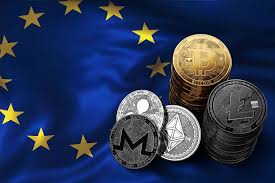The United States and the European Union launched a new collaboration on Friday to reduce Europe’s dependency on Russian energy, the first step in a multi-year effort to further isolate Moscow following its invasion of Ukraine.
According to the White House, the United States and other countries will expand liquefied natural gas exports to Europe by 15 billion cubic meters this year as part of the plan. In the future, even larger packages will be delivered.
Simultaneously, they will work to keep their climate targets on track by using renewable energy to power gas infrastructure and decreasing methane leaks, which can exacerbate global warming.
According to the White House, while the program will most certainly necessitate new facilities for importing liquefied natural gas, the cooperation is also aimed at lowering dependency on fossil fuels in the long run through energy efficiency and other energy sources.
Before leaving for Poland, the final leg of his four-day trip, US President Joe Biden was scheduled to discuss the problem with Ursula von der Leyen, the head of the European Union’s executive arm.
“We are hoping to get a commitment for more supplies for the next two winters,” Von der Leyen said earlier this week. Biden’s national security advisor, Jake Sullivan, recently told reporters that the administration intends to “surge” gas to Europe soon.
Russian energy is a major source of revenue and political influence for the Russian government. Russia supplies about 40% of the natural gas used to heat homes generate electricity and power industry in the European Union.
Following his departure from Brussels, Biden will go to Rzeszów, Poland, where US forces are stationed about an hour’s drive from the Ukrainian border. He’ll be informed on the humanitarian response to the influx of refugees fleeing Ukraine and the plight of those still trapped there. He’ll also visit with members of the 82nd Airborne Division from the United States, who serves alongside Polish forces.
Biden will next fly to Warsaw for discussions with Polish President Andrzej Duda on Saturday. Before leaving for Washington, Biden planned to give an address in Poland.
Biden attended three summits in Brussels on Thursday, organized by NATO, the Group of Seven industrialized nations, and the European Union. The rare series of meetings underscores growing alarm over Ukraine’s ongoing conflict, which is now in its second month.
Despite the fact that Ukraine has held off Russia’s invasion far better than expected, the conflict has turned into a lengthy and violent battle, with thousands of casualties on both sides and millions of refugees leaving the nation.
Western policymakers are particularly fearful that Russian President Vladimir Putin could resurrect the war by employing chemical or perhaps nuclear weapons.
Even though the United States has greatly increased its exports in recent years, getting more liquefied natural gas to Europe could be tough. Many export terminals are already full, while the majority of future terminals are still in the development stages.
According to the Center for Liquefied Natural Gas, an industry advocacy group, the majority of US shipments already go to Europe. Despite the fact that much of the supply has already been contracted out to buyers, there are still options to reroute it.
“The United States is in a unique situation because it has flexible LNG that can be diverted to Europe or Asia depending on who is willing to pay the price,” Emily McClain, a Rystad gas markets analyst, said.
Even if the United States is able to export additional gas to Europe, the region may face difficulties in receiving it. Import terminals are generally found towards the shore, where there are fewer pipeline connections for distribution.
Even if all of Europe’s facilities were fully operational, the amount of gas delivered would be less than two-thirds of what Russia sends via pipelines.
.

















